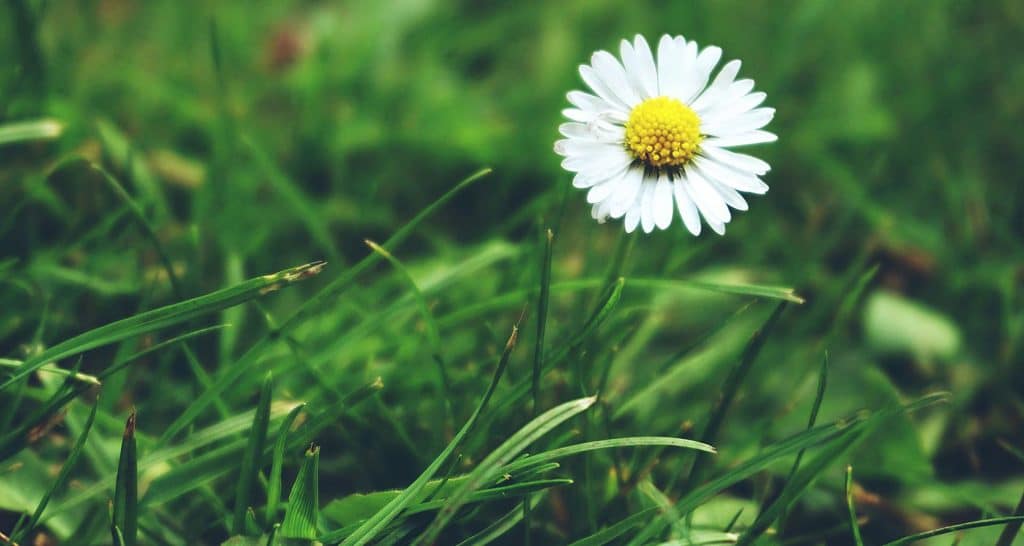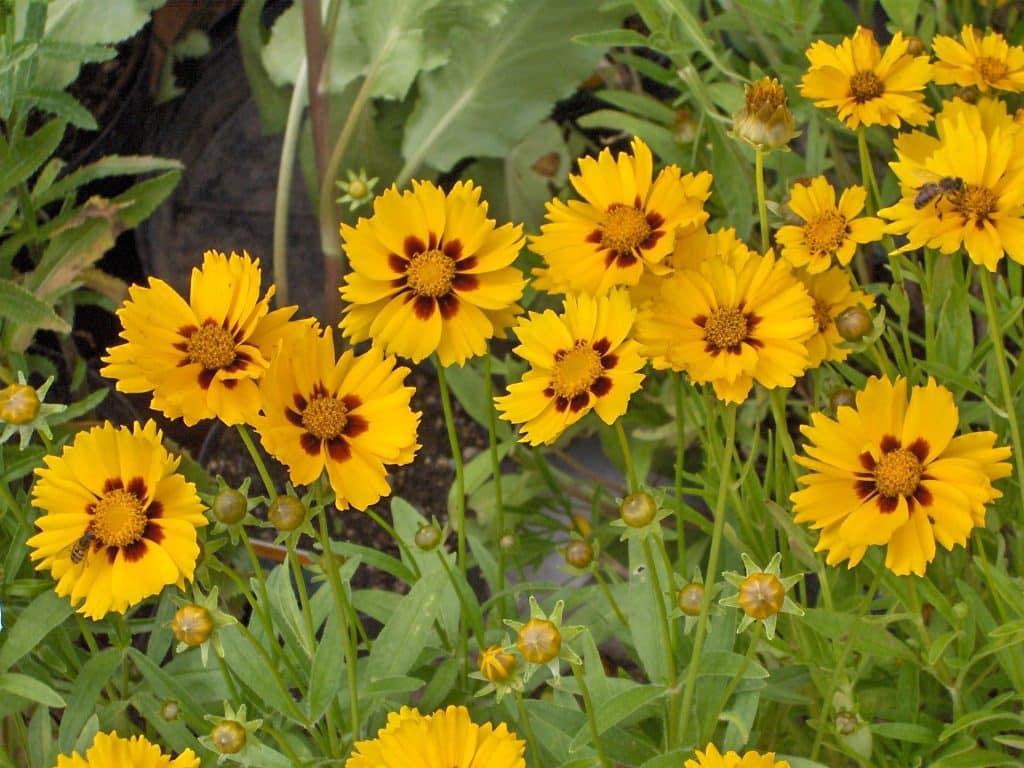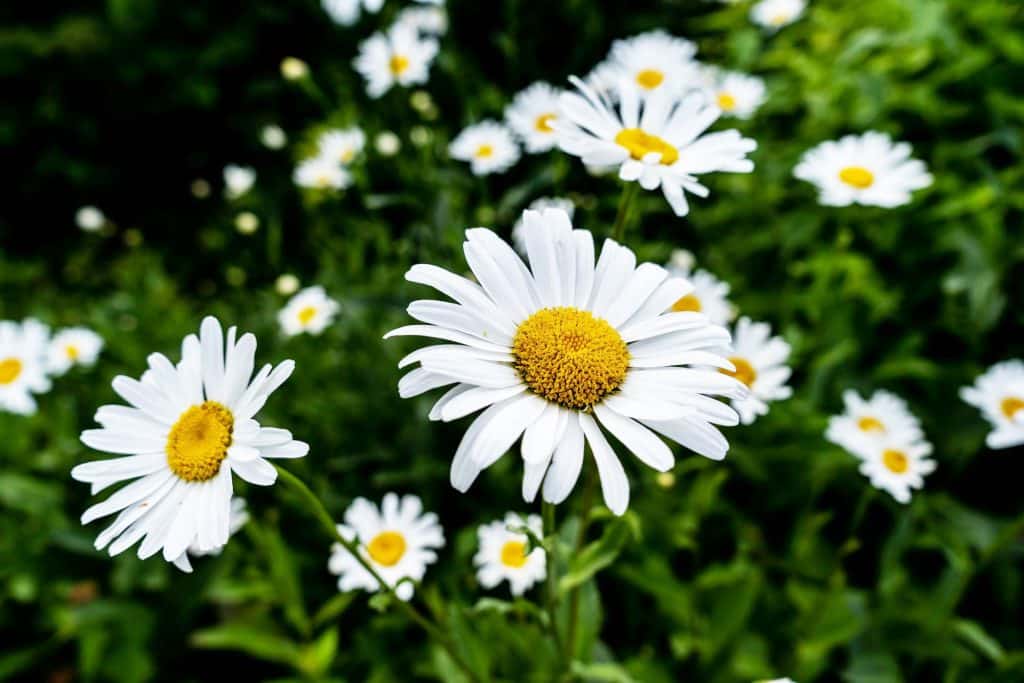Daisy, daisy
Often described as ‘the happy flower’, the daisy is associated with sunny months and warm weather. Kevin Revell makes a case for this simple flower
As spring reaches its zenith, the herbaceous border is all about daisies. Not the sort that enhance or spoil a perfect lawn, depending on your point of view – but those taller growing forms family which typically originate on the North American prairies. Not surprisingly, they lend themselves to planting amongst ornamental grasses.
All daisies are members of the asteraceae family which is the largest plant family of all, having thousands of members across all continents except for Antarctica. The familiar sunflower is an out-sized annual form, as are the golden marigolds of many a bedding display. Ask a child to draw a flower or think back to your earliest memories of flowers and it is the daisy that is most often represented.
The name comes from Anglo-Saxon days – ‘Day’s Eye’ was coined when it was noted that new flowers would open to greet each new day. Most perennial daisies soon establish large clumps which send multiple shoots from tough rhizomatous roots. These should be divided periodically in the garden to maintain vigour and increase stock, discarding the older parts. Plant into moist but not wet compost-enriched soil for best results.

The larger plants often have tatty, faded leaves at the base of the stem by the time they flower so their ‘bare legs’ are best hidden by lower growing plants around them. They are therefore best placed towards the back of the border.
Leucanthemums originate from the native dog daisy or ox-eye daisy, a weed of field margins which has found conditions to its liking alongside motorway verges and will happily spread if given time to seed. Many cultivars have been developed, mostly exhibiting the same simple daisy flower structure of a central yellow boss of disc flowerets, surrounded by the white ray florets that we take to be petals. Forms have been selected that take this simple structure to give double flowers with many petals. Similarly, some have been made filigree with many small filaments instead of petals which gives a shaggy appearance. The variety ‘Aglaia’ is a good example while ‘Victorian Secret’ is a good semi-double form. Usually pure white, the varieties ‘Broadway Lights’ and ‘Banana Cream’ are pale buttermilk yellow.
All forms are tough plants which maintain a presence throughout winter as a green rosette before throwing up stiff stems topped by the familiar daisy flower in late June and July. These rarely need support in all but the most severe weather, (summer storms can wreck a flower border just as it is coming to its peak). Although typically about one metre tall, larger ones such as the appropriately named ‘Manhattan’ may be taller, while shorter types such as ‘Daisy Chains’ and ‘Little Princess’ may suit smaller borders or container growing.
Gailardias or blanket flowers are typical American summer daisy plants. Petals often have zig-zagged edges, as if they have been crimped. They are usually in traffic light colours of red, orange and yellow in various proportions depending on the variety. ‘Giant hybrids’ will grow towards a metre tall but more often, they are compact; the popular tricolour ‘Goblin’, red ‘Celebration’ or ‘Arizona hybrids’ in shades of yellow or orange rarely exceed 30 cm.
The similarly sized Coreopsis or tickseed is another popular mid-season perennial daisy. Bright yellow flowers cover the plant over a long period if they are dead headed regularly to prolong the display. ‘Sunray’ and ‘Early Sunrise’ are pure golden yellow while ‘Sterntaler’ has an attractive chocolatey stripe in the petals.

Heleniums originate from moist meadows in North America and so are not so drought tolerant as some of their relatives. Nonetheless, they are essential garden plants, producing flowers over a long period and if cut back after the first flush, will go on flowering long into autumn.
Beautiful wavy edged petals surround a central velvety brown ‘door-knob’ of a central boss which persist long into winter as frost-rimed seed heads if the plants are not cut down in autumn. Growing up to 50cm, usually in shades of yellow, orange or red or a combination of all three in the case of ‘Sahin’s Early Flowerer’ the most popular variety. ‘Moorheim Beauty’ is a good copper form while ‘Ruby Tuesday’ is a good red selection. Look out for ‘Neat and Sassy’ which is a very floriferous compact form at about 30cm, well suited to growing in pots and containers.
The roots of Echinaceas were well known to Native Americans as a cure-all and today preparations can be bought to boost the immune system and keep colds and influenza at bay. Another fine-looking plant, the swept back petals surround a domed central boss which acts as a magnet to bees and butterflies alike. The plant has become increasingly popular in garden centres as new free-flowering forms have been developed from the bright pink and white originals such as ‘Magnus’ and ‘White Swan’.
The pinks have become ever more shocking in colour and yellow or orange have entered the colour palate. ‘Tomato Soup’ and ‘Orange Skipper’ are among the most sought-after varieties. Avoid some of the double forms however. Although popular, these plants are far from easy to keep, being less tolerant of extremes of wet and cold than many other daisy varieties. They sadly fall prey to slugs and snails early in the season before the stiff, bristly foliage affords more protection.
In the alpine garden, most of the plants have flowered by now as spring is the peak season here but colour is still available from alpine pinks, dwarf forms of the more popular cottage garden pinks or carnations. Foliage colour and texture is provided from succulent drought-tolerant house leeks or sedums which flower in late summer to autumn.
Daisies are represented by Erigeron karvinskianus which look remarkably like the typical lawn daisy but forms a low spreading mat and can become a nuisance as it seeds into cracks in paving. The cheerful flowers fade to pink as they age though, so its bad habits are easily forgiven.
By Kevin Revell
First published in 2019

